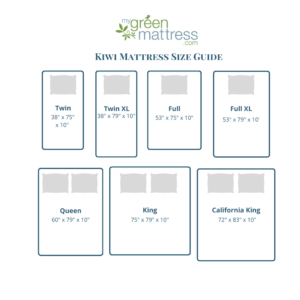You probably learned about them in school, but you may have forgotten more than you remember about sleep cycles. But understanding our sleep cycles may provide you some insight on why you might be feeling tired during the day or how to maximize your sleep and waking hours. In this post we want to give you a little refresher on the human sleep cycle so you can understand your body a little better and have an appreciation for what happens after your head hits the pillow.
The Human Sleep Cycle Unpacked
The typical sleep cycle lasts for 90 minutes. In these 90 minutes, the human body goes through five stages of sleep. If you are a visual learner, check out this helpful graphic on the sleep cycle from Psychology Today. The five stages are:
- Stage 1—Light Sleep: Light sleep lasts for about 5% of the sleep cycle and is when your muscles begin to relax, perhaps with some muscle twitching.
- Stage 2: This stage makes up the majority of your sleep cycle, from 45-55% of that 90 minute cycle. During this time your breathing and your heart rate slow down and your body temperature has a slight decrease as well.
- Stage 3—Deep Sleep: This lasts for just a short amount of time, only 4-6% of the cycle and is when your body begins to generate slow delta waves.
- Stage 4—Very Deep Sleep: Spanning 12-15% of your sleep cycle, your body is producing delta waves. There is very little movement in the body and breathing is rhythmic.
- Stage 5—Rapid Eye Movement: This is the section of your cycle when brainwaves speed up and people have dreams. The cycle lasts for 20-25% of the cycle. The breath is quick and shallow.
NREM vs. REM
You probably hear people talking about needing those REM cycles but what does that really mean? The non-rapid eye movement (NREM) portion of sleep are those first four stages we just mentioned. NREM stages take the body from being awake to being in a very deep sleep. During these stages, the muscles in the body still retain their functionality.
The REM cycle is actually still a bit of a mystery to scientists. The theory is that the eye movements observed during the REM cycle are a result of dreaming but that isn’t confirmed. Regardless, this is the stage when people dream. Strangely, the body becomes almost paralyzed in this stage although organs function normally. This explains that phenomenon you may have experienced of trying to wake from a dream but being physically unable.
The article from Psychology Today explains the 90 minute cycle doesn’t just repeat throughout the night. The amount of time our bodies spend in each stage actually changes. At the beginning of the night we don’t spend much time in the REM cycle as we do towards the end of the night. And even more complex, it seems the length of the REM cycles actually does correlate to the time of night and morning, not just how long you have been asleep. REM cycles tend to be longer between 3am and 7am.
Other Sleep Cycle Variables
You’ve probably both heard and experienced how people of different ages need different amounts of sleep. And it isn’t just the length of sleep that changes. The amount of time the body spends in deep sleep changes with age as well. Children spend more time in deep sleep than adults. And infants spend much more time in the REM cycle than children and adults alike.
Ph.D. Amie Gordon who wrote the Psychology Today article we referenced is quick to say scientists still have a lot to learn about sleep. But what we do know is fascinating and important in understanding how to feel well rested. Good sleep is heavily affected by the mattress on which you’re resting your body. Here at My Green Mattress, we not only focus on quality of sleep and comfort/support, but also sourcing non-toxic materials of which to handcraft our beds to ensure that you’re getting healthy sleep, too.









